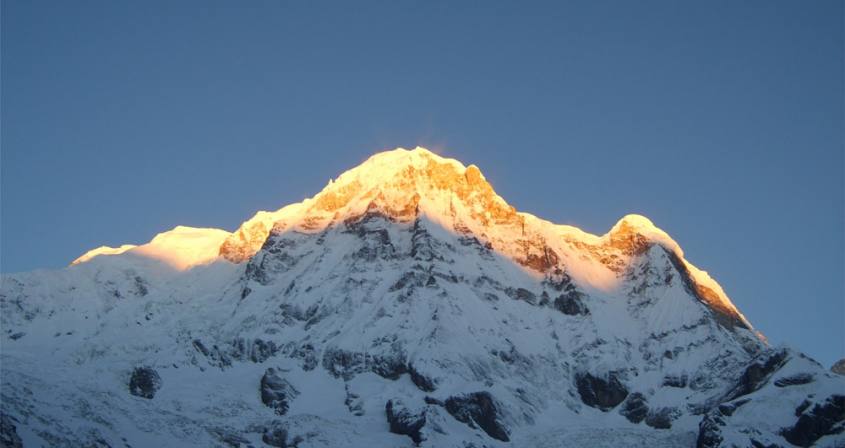Annapurna Region Trekking
Annapurna is Nineth highest mountain of the world.A combination of majestic beauty and accessibility has ensured that the Annapurna region is the most widely visited anywhere in the Himalayas, with approximately three times more trekkers choosing to trek here than other area. Annapurna Region Treks trails follow the ancient salt trading route up the Kali Gandaki Valley Gorge and the wealth of well-established trading inns, that have now been converted into trekking lodges, The comfortable accommodations as well as good road and air links with Kathmandu, have been instrumental in the great popularity of trekking here.
The Annapurna Conservation area - a multiple-use concept for the management of flora and fauna - is the most geographically and culturally diverse protected area anywhere in the world. With no fewer than seven ethnic groups living and working in the region, nowhere else in Nepal can one meet and experience such a wide variety of human culture.Equally diverse is the plant and animal life. The extremes in elevation have created a remarkably wide array of flora, from sub-tropical lowland forests of oak, bamboo and rhododendron in the south, to the high alpine meadows and windswept desert plateaus bordering Tibet in the north.
The varied wildlife includes the snow leopard and the Himalayan black bear at higher altitudes, while the grey langur monkey and a variety of cats and rodents flourish at lower levels. More than 440 species of bird have also been recorded.The area is dominated by both the Annapurna and Dhaulagiri Himal, which sweep from the low hills at 700 m to pierce the sky at 8000 m - and all within a distance of only 50 km.The trekkers’ starting point of Pokhara is ideal for the purpose - with arguable the most impressive mountain backdrop anywhere in the world. The town is a great base both to prepare for your trek and to relax after successfully completing it. Access to the mountains is relatively easy and within a few hours of beginning your journey you are experiencing tremendous high mountain views close-up!
Annapurna Region Trek: Link of Annapurna Region Trek
Annapurna Trekking Permit:
For the Annapurna region, trekkers requires to have an entrance permit of Annapurna Conservation Area Project (ACAP Permit), which cost USD 20 Per person.
To trek in Annapurna Regions of Nepa,l trekkers need to pay USD 20 for the TIMS Card.
Annapurna Trekking Season:
Pink mountain treks and Expedition would like to recommend the best seasons to trek in the Annapurna region are Autumn (from mid-September till November end) and Spring (from the beginning of March until mid-May). Temperatures will drop considerably as you trek higher everyday. The nights are cold (between -20 C to 5C) but the days are sunny and hot (between 10C to 30C). The mornings are usually clear, with clouds building up during the afternoon, disappearing at night. Trekking during the monsoon and winter is not recommended; as the visibility during monsoon is limited, high pass (Thorung la- 5416m) gets covered up with snow during winter.
Annapurna Trekking Route:
Mostly Annapurna Region Trekking Route go through the Pokhara and end at Pokhara.But Round Annapurna Trek, Annapurna Sanctuary Trekking route go through either Phedi or Nayapul and end at Besisahar of Lamjung District or Start from Besisahar and end at Phedi or Nayapul of Kaski District.
Annapurna Trekking Guide:
Pink mountain treks and Expedition graded each Annapurna Region Trek based on the level of terrain, length of walks, highest elevation and climate.
Soft or Easy: Experience is not mandatory for an easy trek in Annapurna Region Trek in Nepal. Maintained paths and with easy access to modern amenities, easy treks in Annapurna Region have 4- 6 hours each day over steep hilly terrain on usually rough trails but no real extremes of weather. Soft trekking adventures in Annapurna Region reach up to 3500 gaining 400-700 meters every day.
Moderately Challenging: In moderately challenging treks you are likely to walk for 6-7 hrs every day, cross steep hilly terrains to Annapurna Region in high altitude area over 3500 meter till 5545 meter. These treks come across occasional high passes with daily ascend and descend of around 500-1000m. You are likely to be on a remote environment with extreme weather in some days where you might be facing high altitude air with low level of oxygen and only basic facilities on some nights. Previous trekking experience, physical fitness and positive attitude are therefore essential.
Extremely Challenging: You will be walking for 6-8 hours per day or longer on very high altitude with tough daily ascend and descend of around 500-1000m. Extreme treks also involve remote, wild environment with extreme weather at times and availability of only few facility, perhaps for extended periods. You will also be trekking on minor trails and difficult terrain including snow or scrambling sections. Therefore, trekkers require having high level of physical fitness along with optimal level of experience and positive attitude. It is better to have experience of camping experience on the cold weather.
Annapurna Trekking Advice:
Pink Mountain treks and Expedition would like to advice you to bring these things for your Annapurna Region Trekking:
- Lightweight walking boots.
- A pair of lightweight/heavyweight trousers are useful higher up in the mountains in the morning and at night.
- 1-2 pair of loose fitting long shorts/skirts.
- 2-4 cotton T-shirts.
- 1 lightweight long sleeved-shirt is particularly suitable for avoiding sun burn.
- A sunhat and ensure it has wide brim to cover the face and neck.
- 2 pairs of thin and 2 pairs of thick woolen socks.
- Swimming suit
- Water Bottle
- Sunglasses and strap
- Toiletries with large and small towels. Toilet paper can be bought in Kathmandu and some village in the mountains.
- Small headlamp and/or flashlight/torch with spare batteries
- Personal medical supplies - dont forget band-aids and tweezers.
- Army-knife and sewing kit
- Sun-screen, sunblock, sun-tan lotion.
- Winter Requirements For Your Trek:
- Warm jacket. Fiberfill or down should be adequate. This is especially necessary during winter from December to February.
- Sleeping bag to -15 C or sleep sheet (if renting or agency supplied)
- Woolen shirts and thick sweaters. During winter months, December through February, These items are essential. Thick sweaters can be purchased in Kathmandu.
- Windproof/Waterproof trousers. Necessity on all treks going above 3,000 meters.
- Thermal underwear. These are excellent to sleep in at night. In the winter months thermal underwear are quite invaluable.
- A woolen hat to wear in the morning and at night. During winter it is an essential item.
- A pair of gloves. Leather with lining and woolen are best.
- Snow Glasses and strap
- Snow gaiters can be essential
Annapurna Trekking Equipment:
For trekking in the Annapurna region, you will need walking boots, sleeping bag (3 seasons), waterproof jacket and trousers, fleece jacket, warm hat and gloves, sunglasses, water bottle, sun-screen and day pack.
Annapurna Trekking Map:
Annapurna Trekking Cost:Basically Annapurna Region Trekking cost will depend on days of trek, Guide fee, Porter fee, accomodation, Permit and TIMS card.For the exact cost for your trip to Annapurna Region's specific Trek please send your quiry to Pink Mountain Treks and Expedition's email adress.......
Annapurna Trekking Difficulty:
Pink Mountain Treks and Expedition Nepal is committed to providing the best services which will give you a once in a life time journey in this connection, we perform our duties security, honestly and seriously to make your journey very smooth and pleasant. High Altitude sickness, knee problem during your trek, bad weather and rainning, cloddy and fuggy weather, less facilty based tea house are the main difficultiy of Annapurna Region Trekking.
Annapurna Trekking Itinerary: Please send your email to Pink Mountain Treks and Expedition's email adress.......for the Itinerary of specific trek to Annapurna Region Trekking.
Luggage While Annapurna Region Trekking
During the Annapurna Basecamp Trek your main luggage will be carried by porters if you hired them. You simply carry a day pack with water bottle, camera, sun-screen, spare jacket, etc. - a small load that allows full enjoyment of the trek. A trek bag is ideal for your main luggage, plus a small lockable bag for travel clothes or anything that you do not need during trek which you can leave at hotel’s locker room/safe deposit box in Kathmandu or Pokhara for free of charge.
People and Culture During Annapurna Trekking
The Gurungs are the largest group in the Annapurna region. They inhabit the higher northern slopes of the Annapurna, Lamjung, Chuli and hills around Ganesh Himal.
The immediate vicinity of Pokhara is largely populated by Chettris and Bahuns (Brahmins).They also live around the historic site of the old Gorkha kingdom. The Magars inhabit the lower trail between Baglung and Dana. They live high on the steep ridges along the tributaries of the Kali Gandaki.
Another ethnic group of this region is the Thakalis. Known throughout the country as accomplished hoteliers and skilled traders, they are noted for their aggressive trading spirit. They make up one of the few richer groups of people in Nepal. The Jomsom trek passes through Thak Khola, the Thakali homeland. In the valley of the Muktinath live the Baragaun Bhotiya. Their lifestyle is similar to that of the Tibetans. Another group of people who share a close affinity to the Tibetans are the Lopa people of Mustang, north of Kagbeni. Some of them practice the ancient pre-Buddhist religion of Bon which is infused with animistic and shamanic belief and ritual. The people living in the upper Marshyangdi valley are generally known as Mananges.
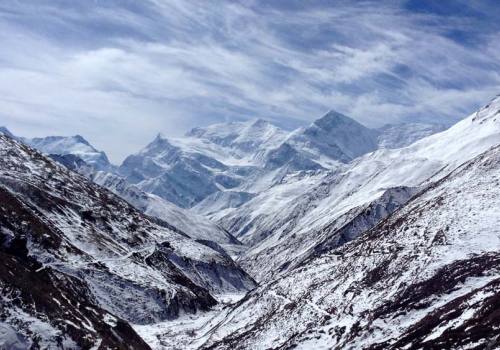
Annapurna Circuit Trek with Poon Hill and Tilicho Lake
Annapurna Circuit trek with Tilicho Lake and Poon Hill with Pink Mountain Treks and Expedition takes you to the world’s highest…
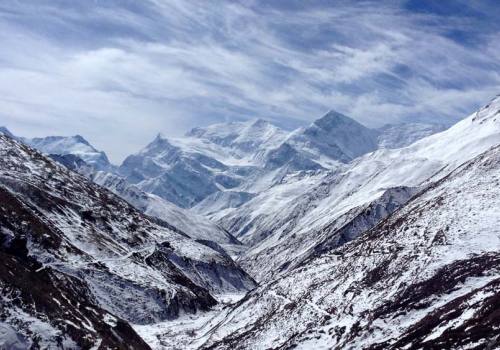
Annapurna Circuit Trek with Tilicho Lake and Poon Hill
Annapurna Circuit trek with Tilicho Lake and Poon Hill with Pink Mountain Treks and Expedition takes you to the world’s highest…
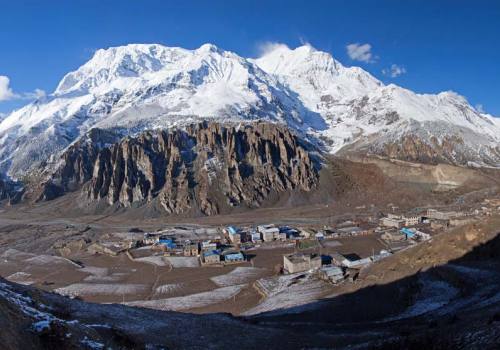
Annapurna sanctuary trek with Tilicho Lake
Annapurna sanctuary trek with Tilicho Lake is well known tea house trekking trail in the southern face of Annapurna base…
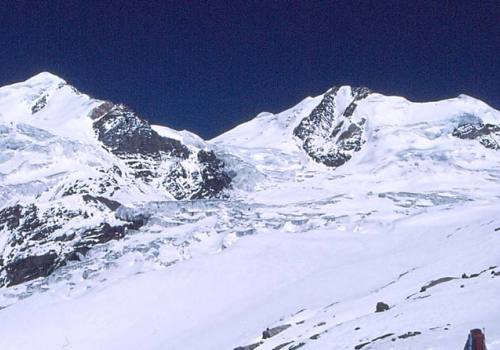
Chulu Peak Base Camp Trekking
Chulu Peak (6584m) Base Camp Trekking one of the popular Trekking route is situated on top of the Manang valley with awesome…
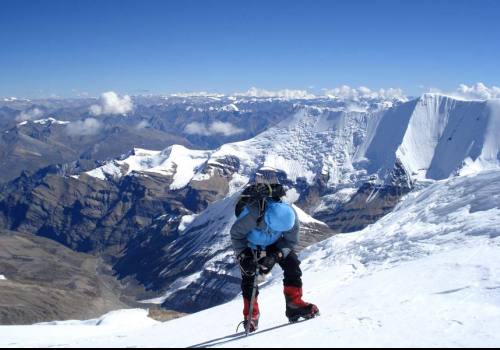
Hiuchuli Base Camp Trek
Hiuchuli Base camp Trek is one of the popular Trekking in Hiuchuli Himal renge.Hiunchuli forms a massive south-facing wall…
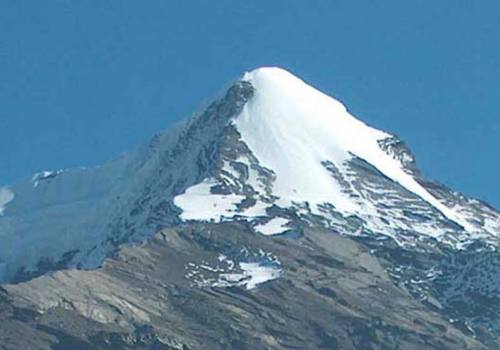
Pisang Peak Trek
Pisang Peak Base Camp altitude is 4,380m.Pink Mountain Treks and Expedition organize fully supported and tented on Trekking …
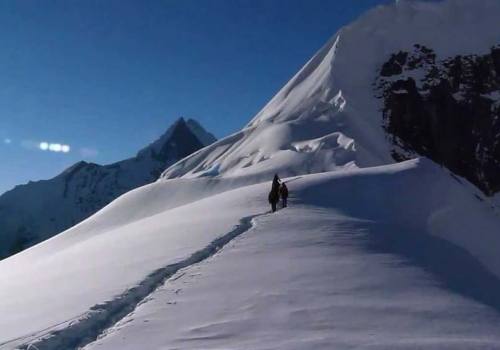
Tent Peak (Tharpu Chuli) Trekking
Tent Peak (5663m/18,575 ft), known as Tharpu Chuli in Nepali, is located towards the south of the Annapurna Base Camp. We…
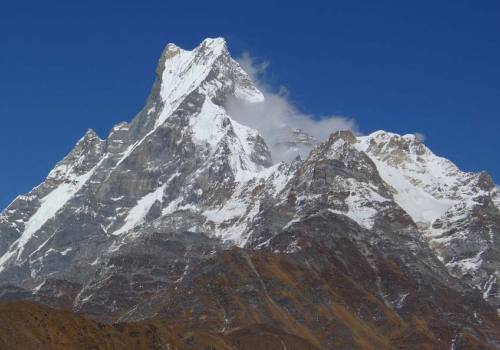
Mardi Himal Trek
Pink Mountain Treks and Expedition would love to offer the Mardi Himal Trek, a newly opened route and hidden treasure in…
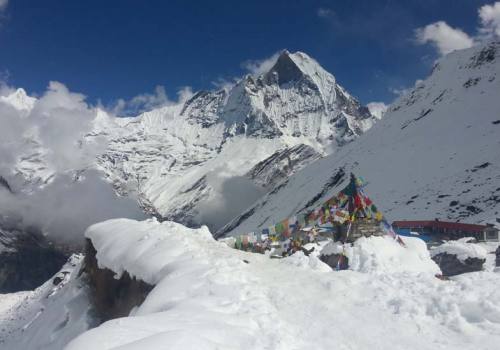
Singu Chuli peak Base Camp Trek
Singu Chuli peak (6501m) is located in Annapurna array within the enclosing of Annapurna Sanctuary Trekking route following…
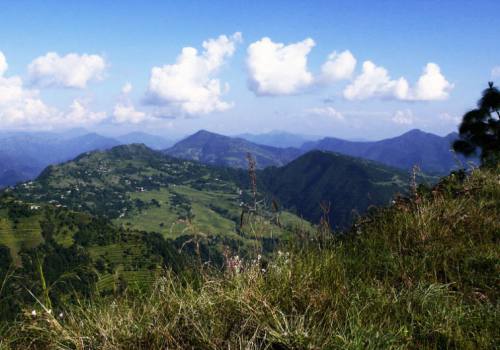
The Royal Trek
The Royal Trek is one of the shortest treks that follow a shrub like path along the foothills of Annapurna, north of the…
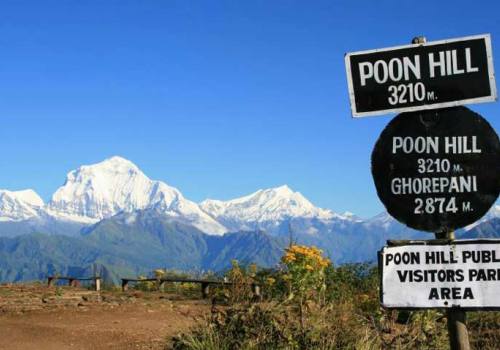
Ghorepani Ghandruk Trekking
Ghorepani Ghandruk trekking is very popular trek among few.This trek to Ghorepani Ghandruk via Poonhill is fairly easy and…
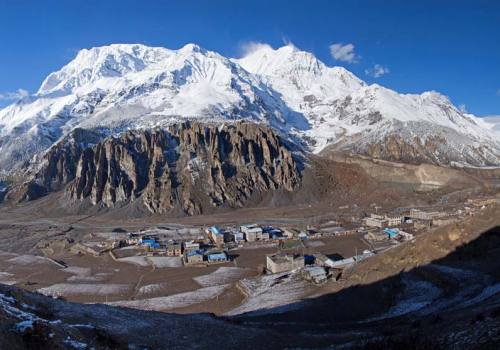
Annapurna Sanctuary Trek
Annapurna sanctuary trek is well known tea house trekking trail in the southern face of Annapurna base camp. Trekking to…
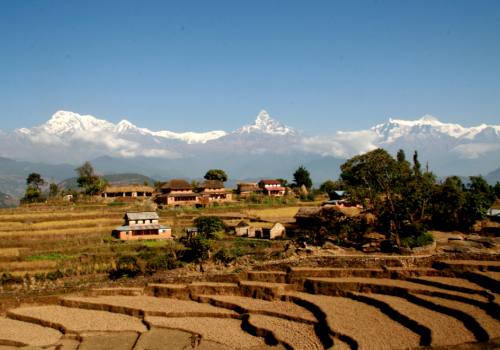
Panchase Hill Trekking
We start Panchase Hill trekking from beautiful city Pokhara to experience its natural beauty and the panoramic views of over…
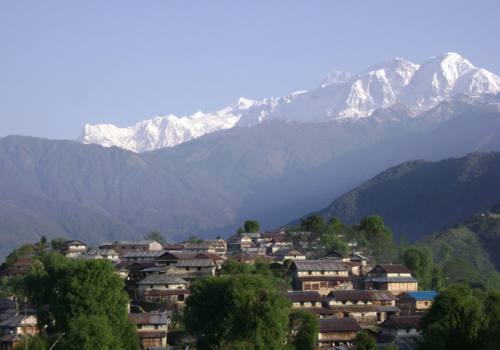
Trek to Gurung village of Siklis and Ghale Gaun Trek
Trek to Siklis and Ghalegaun is low altitude trek cuts through an area rarely visited and traverses a variety of terrain…
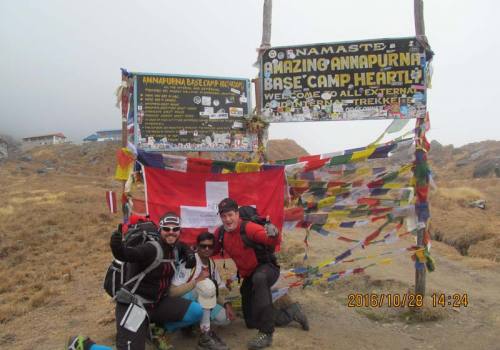
Annapurna Basecamp Trek with Tilicho Lake
Annapurna base camp trek with Tilicho Lake with Pink Mountain Treks and Expedition takes you to the world’s highest lake…
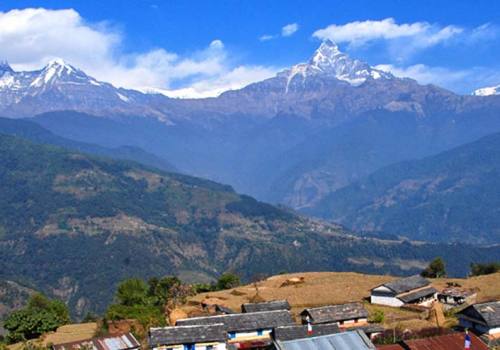
Dhampus Trekking
Dhampus Trekking is two day hike to the Dhampus hill with Pink Mountain Treks and Expedition. Dhampus Trekking is extremely…
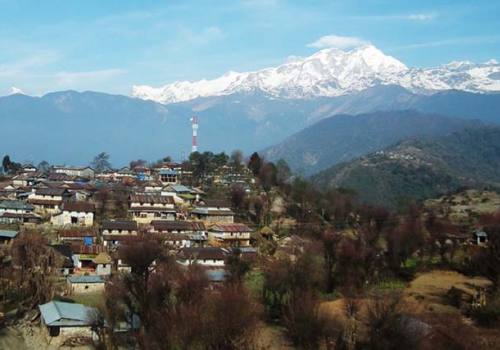
Ghalegaun Trekking
Pink Mountain Treks and Expedition's presents to our aluable trekkers, Ghalegaun Trekking train, situated at the…
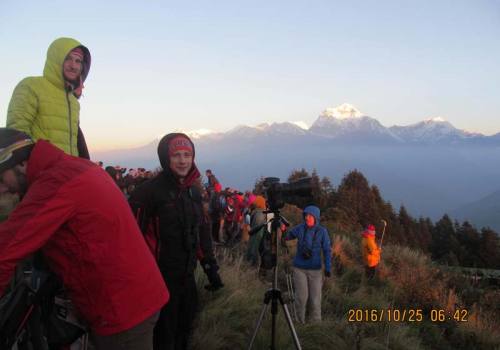
Annapurna Base Camp Trek with Poon Hill
Trekking to Annapurna Base Camp,offered by Pink Mountain treks and Expedition, is a moderate nature trek that starts from…
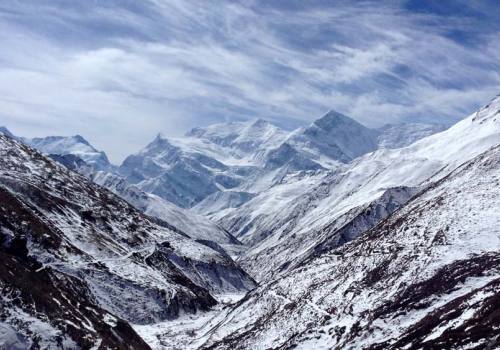
Annapurna Circuit Trek
Trek to Annapurna or Annapurna Region Trek or Annapurna Trekking is famous trekking route in Nepal.Trek to Annapurna Round …
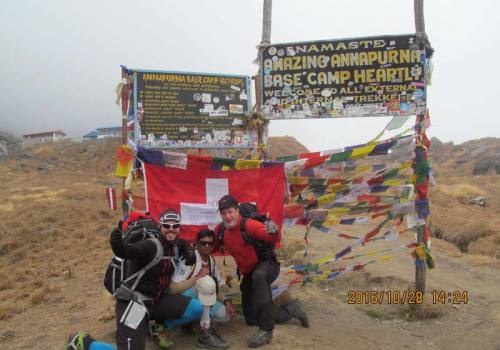
Gay Trek to Annapurna Base Camp
Gay Trekking to Annapurna Base Camp,offered by Pink Mountain treks and Expedition, is a moderate nature trek that starts…
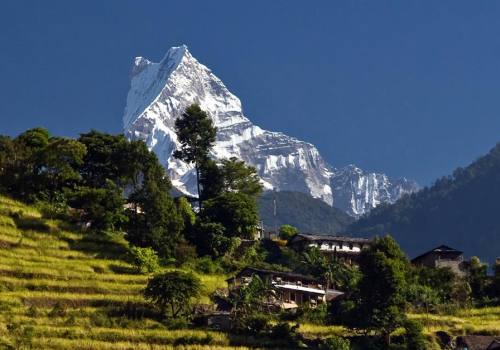
Ghorepani Poonhill Trekking
Very soft and famous adventure trek in Nepal's middle hills, with the awesome backdrop of the Annapurna, Machhapuchhre…
Related Category
- Dhaulagiri Region Trekking
- Gauri Shanker Region Trekking
- Rolwaling Region Trek
- New Trekking Route
- Dolpo Region Trekking
- Everest Region Trekking
- Kanchenjunga Region Trekking
- Langtang Region Trekking
- Makalu Region Trekking
- Manaslu Region Trekking
- Short Trek Around Pokhara
- Short Treks Around Kathmandu
- Mustang Trekking
- Ganesh Himal Trekking
Fixed Departure
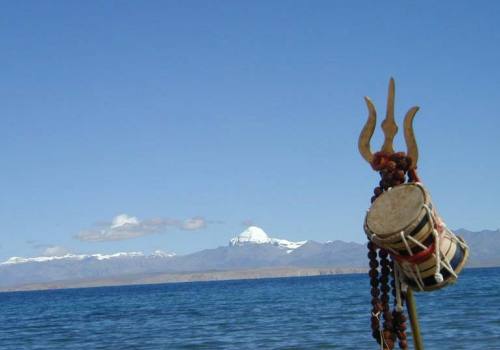
Kailash Mansarovat tour with Pink Mountain Treks and Expedition let you to feel most memorable adventure trip of the life.…
In Detail